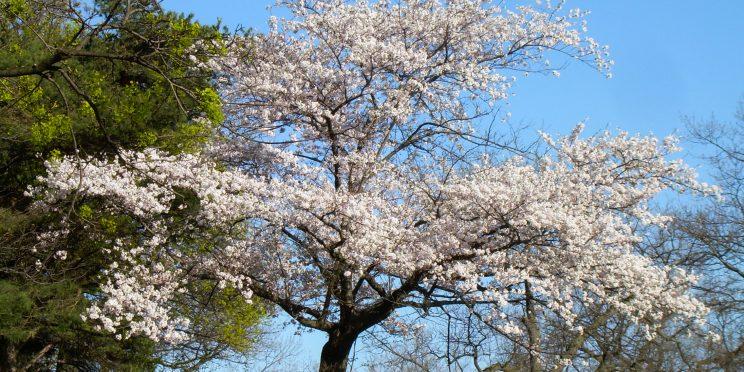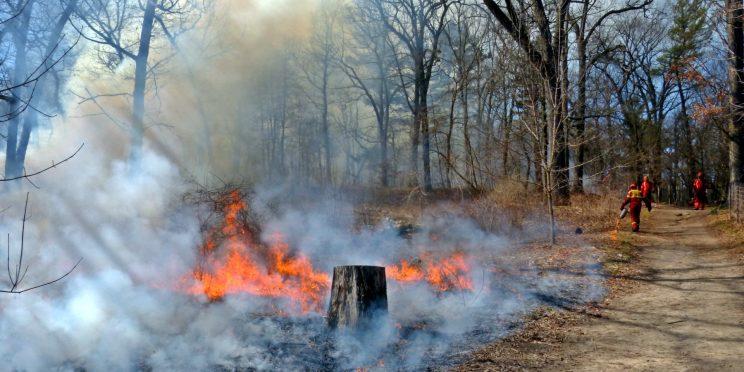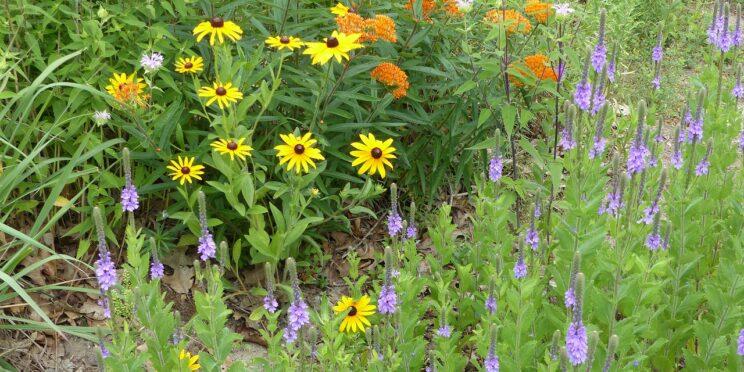I love High Park and would like to volunteer. How can I help?
Thanks for your interest in High Park. If you want to volunteer as a Steward you need to sign up on the city's volunteer website and you will be notified of the sessions. The places that are stewarded are Environmentally Significant Areas and there are strict protocols for planting and invasive removal that must be met.
We also have a Natural Environment Committee that is looking for members. Email us and ask to be added to our list. You can also view previous newsletters.
If you would like to steward other parks and ravines check the Toronto Nature Stewards and the city's Community Stewardship programs.
Can I make a donation to support High Park Nature or High Park Stewards?
High Park Nature and High Park Stewards are set up to receive donations through Pollinator Partnership Canada. You can donate by clicking the DONATE button at the top of each page on our website. The general purpose of the funds is to support the activities and goals of all our groups: High Park Nature, the High Park Natural Environment Committee and High Park Stewards, including public education through the website and the Boulevard Bed demonstration garden. Special projects will be considered as they arise.
We also suggest you consider donating to the High Park Nature Centre.
How can I find out what is happening in High Park?
There is no single source of information on what is happening in High Park. Each group has its own calendars. Our Other Groups and Events page provides links to those organizations. Add yourself to their email lists or check their social media for upcoming things to do.
There are many other groups related to High Park that can be found here. and The High Park Nature Centre has many activities for children and adults.
The city has a Festival and Events Calendar. Use the filters like "Environmental" and "Walking" for display a list.
Here are additional links for Birding, The Toronto Field Naturalists and the TRCA also have public birdding and walking tours.
Can I bike in High Park? Are there cycling trails?
You can bike in the park on roads and paved (asphalt) trails. Riding on dirt trails or crushed stone trails is not permitted; walk your bike instead. The soil on dirt trails is sensitive to compaction and overuse, and many of these trails are narrow, not leaving enough room for both cyclists and walkers.
Is it OK to go foraging in High Park?
Foraging (collecting any kind of plant material) is not permitted in High Park. The injury and removal of plants in public parks, forests and ravines is prohibited by the Toronto Parks Bylaw, Chapter 608.
Can I or my group do a clean-up in High Park?
Much of High Park is designated as ANSI (Area of Scientific and Natural Interest) and ESA (Environmentally Sensitive Area). That means there can’t be groups of people walking over the restored areas, which would result in compacted soil and other detrimental results. Staying on the paths except under specific conditions and guidance that protects the soft ground is essential to being able to maintain a very rare habitat.
The High Park Stewards occasionally conduct supervised clean-up activities in natural areas. Check the Volunteer Opportunities schedule for details.
How can I contribute photos to the High Park Nature website?
To contribute photos, please contact mail@highparknature.org. It's best to send files that are not too big but also not too small. We usually aim for a resolution of 1920 x 1440 pixels as the biggest size. 800 x 600 pixels seems to work OK as long as the photo doesn't need further cropping.
If you have a site that you can upload to, such as Flickr or Dropbox, then you could just post the full size photos and we will check them and download and resize as needed.
Please tell us what name you would like to show in the credit if we do use any of your photos.
Why does the City use so much salt on park sidewalks and roads during the winter?
The amount of salt applied to any given area is dependant on numerous factors such as current ground conditions, current and forecasted weather, available equipment, how a specific park area is used etc. In the end its up to very experienced city staff to use their judgement in determining the amount of salt used. Staff are reminded often that public safety and our responsibility under the property owners liability act take precedence when clearing our roads and walkways.
Salt is the most effective product on the market. Alternative products such as sand, sawdust, pickled salt, calcium chloride, salt brine etc. are all products that parks / city does consider and uses where appropriate. No salt is used on any of the trails or walkways within the dog off-leash area.
We are always mindful of the natural environment and take that into consideration at all times.
[response provided by Parks Operations staff]
We just moved to the area and I’d like to draw bats to our area to help with insect control as our backyard back onto a park and we have a lot of trees etc.
Is this something that can be done? From what I read, there’s a lot at High Park and we’re not very far away. Any insight anyone could give me would be wonderful.
Great question! We love bats here at High Park Nature and the Nature Centre, and we are always excited when others do too.
The best way to attract bats to your yard is to offer them a home. Bats love to roost in attics, roofs, and crevices in buildings, but this behaviour is not ideal for a home-owner. Another option is to build them a home! Bat boxes are ideal habitat for roosting bats. Here are some sites with information on bat boxes and how to build one:
Or, if you would rather purchase one, the has many great options.
Bats also do not like flying over open areas as they are more visible to predators, so the more plants and trees in your yard the better. Good luck!
See also Bats in High Park.
I saw a pesticide sign posted in High Park recently. Why is the City using pesticides here? Is this harmful to birds and insects?
For information about pesticide application in the natural areas of High Park, please see this notice.
When you hear about pesticides being harmful to birds and insects, it's generally referring to the widespread use of pesticides in agriculture, especially for "Round-up Ready" crops. In that case the product is sprayed over the whole field (and also any unplanted edges – important habitat which is also disappearing).
In High Park, especially trained and licensed workers apply the pesticide directly on individual plants or patches. The entire treatment area is not broadcast sprayed. This selective method of control ensures that damage to other desirable plants is minimized and that small quantities of pesticide are used.
The biggest threat to insects and birds and other wildlife is the loss of habitat, whether it's through development or other causes (including climate change). That's one reason why protecting and improving the habitat in High Park is so important. So far the diversity of insects and birds in High Park is still quite remarkable, considering all the urban pressures on the park. For example, at least 70 species of butterflies and over 1000 species of moths have been recorded in recent years. More than 50 species of birds breed in the park. Many more pass through during migration or over-winter in the park. (Declines in migratory species are affected by conditions elsewhere, especially where they breed.)
I was inspired by the lupine blooms in High Park and I want to recreate that ecosystem in my backyard. Could you recommend grasses and other groundcovers to plant around the lupines? I don't want to plant anything too high that would drown them out, but I also want to keep the ground around them planted up.
We're glad that you are interested in growing native plants. Please be aware that the native (common) lupine is actually not easy to grow because it doesn't transplant well and needs specific soil conditions. We don't recommend making lupines the main focus of your garden because you will likely be disappointed. Lupines only have a short bloom time (late May-early June) and the patches that you see in High Park have taken decades to grow and don't spread out very much. Cultivated lupines that you can buy in garden centres don't provide the same ecological benefits as the native ones.
While aesthetics are important, we hope that the primary purpose now of gardeners (aside from food) will be to plant for ecological diversity and especially for pollinators. There are many other native plants that are beautiful and bloom at different times throughout the season.
You haven't said what kind of soil and sun your garden has but that will determine what you can grow there.
Here are some resources you may find helpful:
- Other Groups information; we especially recommend In the Zone Gardens
- Plant Lists



















